#peperomia argyreia
Text
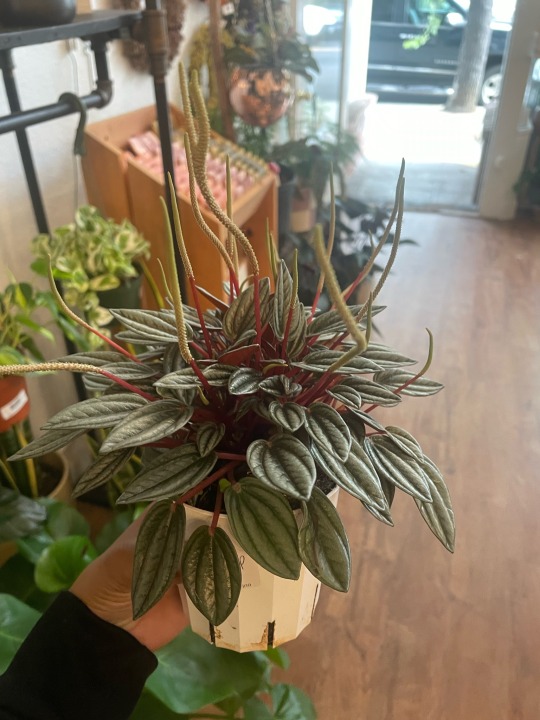
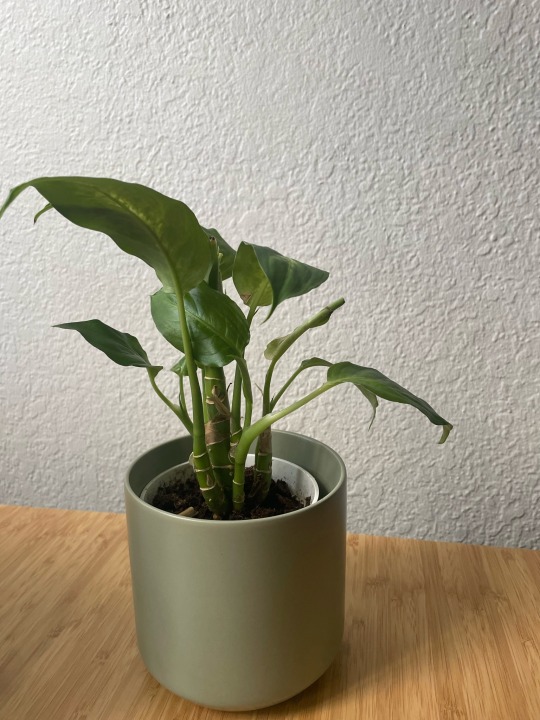

9.30.23
Maybe my power is to move in silence. Maybe I am protecting my energy by yielding it to create and alchemize something valuable.
#mine#personal#thoughts#aesthetic#plant mom#morning tea#dieffenbachia#peperomia argyreia#green tea#romanticizing the mundane#simplicity#appreciate the small things#silence#alchemy#protect your energy
4 notes
·
View notes
Text
Slice of Green: Growing a Watermelon... Peperomia!
Step into the wonderful world of indoor greenery, where we’ll unveil the captivating charm of Peperomia Watermelon (Peperomia argyreia), a beloved and sought-after houseplant. With its lush green foliage that closely mimics the enchanting patterns of a watermelon rind, this plant has earned its place as a must-have addition to any plant lover’s collection.
Imagine having a slice of summer…
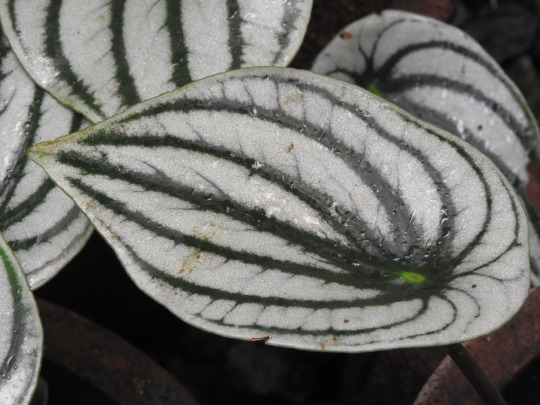
View On WordPress
#beginner houseplant#easy to grow houseplants#growing houseplants#houseplant#indoor gardening#kid safe#Peperomia argyreia#pet safe#watermelon
0 notes
Text
youtube
Guest Presenter Tammy Huynh shows us how to make mini greenhouses for growing seeds and cuttings. Subscribe 🔔 http://ab.co/GA-subscribe
Greenhouses are so useful for growing warm climate plants as temperature, exposure, and light can all be controlled and when plants transpire the water droplets are released into the air forming a humid microclimate. They should also have sufficient ventilation to allow fresh air to circulate around the plants which helps them grow.
Whilst a lot of gardeners dream of having a walk-in greenhouse, Tammy shows us how to take the basic principles and create three mini versions you can make at home from everyday containers.
Germinating Seeds:
Plastic containers such as berry punnets are perfect for turning into a mini greenhouse as they have the right balance of shelter to build up warmth and humidity, and holes for ventilation. They are great for growing micro herbs or starting off plants like tomatoes, pumpkins and basil that prefer warmth to germinate.
To turn a plastic container into a mini greenhouse:
1. Wash and sterilise containers before use, to avoid contamination from the food that was in there previously.
2. If there are no holes, add a few to the top and bottom for ventilation and drainage. “Getting the air in and circulating will discourage any mould from growing in the moist conditions”.
3. Fill the base with a light, friable seed raising mix. “We don’t want to fill them up the whole way because we want room for the seeds to grow.”
4. Sprinkle the seeds over the soil.
5. Keep the soil moist using a spray bottle.
6. Place in a brightly lit spot out of direct sun.
7. If there are plenty of ventilation holes, you can keep the lid shut until the sprouts are reaching the roof.
8. If you’re growing plants that will be transplanted into the garden, open the lid once they have sprouted to get them ready for the harsher world outside. They are ready to transplant when they have their true leaves.
Propagation from cuttings:
For larger plants and cuttings, a plastic storage box with a lid makes the perfect greenhouse. Drill some holes around top on each side or leave the lid ajar to ensure adequate ventilation. An even easier option? Simply cut a clean plastic bottle in half and pop it over a small pot with an individual cutting! The top end has built in ventilation or poke a few holes in the bottom end.
Take your cuttings:
Angel-wing Begonias
1. Take a 10-15cm cutting with clean secateurs, cutting underneath a node which is where new roots will form.
2. Remove any flowers so the plant can put energy into growing new roots and shoots.
3. Cut large leaves in half to reduce water loss.
Watermelon Peperomia is a great one to try too - “Just from one leaf you can actually get two cuttings!”
1. Cut a leaf stalk at the base of the plant
2. Cut the stalk at the base of the leaf and discard
3. Cut the leaf in half keeping the stem end intact.
4. Both parts can be planted, cut end down.
Potting up:
1. Partly fill a small pot with a 50/50 mix of perlite and premium potting mix.
2. Suspend the cutting in the pot so that when you backfill, it doesn’t damage the cutting.
3. Lightly tamp down the mix on top and water in.
4. Pop into your greenhouse box or place a bottle half on top and watch it grow!
Featured Plants:
SPRING ONION - Allium fistulosum
PARSLEY - Petroselinum crispum cv.
ANGEL-WING BEGONIA - Begonia maculata cv.
WATERMELON PEPEROMIA - Peperomia argyreia
#gardening australia#Australia#Solarpunk#diy#do it yourself#green house#gardening#garden#greenhouse#Youtube
23 notes
·
View notes
Text
Unveiling the Charm of the Pink Bubbles Plant: A Delightful Addition to Your Indoor Garden
In the world of indoor gardening, there's a captivating plant that's been stealing hearts with its unique appearance and cheerful demeanor—the Pink Bubbles Plant. With its whimsical pink-hued foliage and compact, bushy growth habit, this charming plant adds a touch of magic to any living space. Join us as we embark on a journey to explore the enchanting world of the Pink Bubbles Plant, uncovering its secrets and discovering why it's becoming a favorite among plant enthusiasts.
Meet the Pink Bubbles Plant: A Delight for the Senses
The Pink Bubbles Plant, scientifically known as Peperomia argyreia, is a member of the Piperaceae family and is native to South America. What sets this plant apart are its eye-catching leaves, which feature a striking pattern of silvery stripes and a blush of pink that resembles delicate bubbles dancing across its surface. The rounded leaves, reminiscent of small watermelon slices, create a captivating visual display that's sure to spark joy in any room.
Beyond its visual appeal, the Pink Bubbles Plant also delights the senses with its low-maintenance nature and compact growth habit. This plant is perfect for both novice and experienced gardeners, as it requires minimal care and thrives in indoor environments with bright, indirect light. With its petite size and bushy growth, the Pink Bubbles Plant is ideal for adorning shelves, desks, or any cozy corner in need of a pop of color.
Caring for Your Pink Bubbles Plant: Tips for Success
While the Pink Bubbles Plant is relatively easy to care for, providing the right growing conditions will ensure its health and vitality. Here are some tips to help your Pink Bubbles Plant thrive:
Light: Place your Pink Bubbles Plant in a location with bright, indirect light. Avoid direct sunlight, as it can scorch the delicate foliage.
Watering: Allow the soil to dry out slightly between waterings, then water thoroughly until the excess moisture drains from the bottom of the pot. Overwatering can lead to root rot, so it's essential to strike the right balance.
Humidity: Pink Bubbles Plants appreciate moderate to high humidity levels. You can increase humidity by placing a humidifier nearby or placing the plant on a pebble tray filled with water.
Temperature: Maintain temperatures between 65-75°F (18-24°C) for optimal growth. Avoid exposing the plant to cold drafts or sudden temperature fluctuations.
Fertilizing: Feed your Pink Bubbles Plant with a balanced, water-soluble fertilizer diluted to half strength every 4-6 weeks during the growing season (spring and summer).
By following these care tips and providing a little love and attention, your Pink Bubbles Plant will reward you with its charming presence and vibrant foliage, brightening up your indoor garden and bringing joy to your home.
Conclusion: Embrace the Magic of the Pink Bubbles Plant
In conclusion, the Pink Bubbles Plant is more than just a houseplant—it's a delightful companion that brings a touch of whimsy and charm to any indoor space. With its captivating pink-hued foliage and easy-care nature, this plant is a must-have for plant enthusiasts looking to add a pop of color to their home decor.
0 notes
Text
Best Tips to Grow Watermelon Peperomia
Watermelon Peperomia, also known as Peperomia argyreia, is a charming houseplant known for its unique Leaves that resemble the rind of a watermelon.
This plant is native to South America and makes for a delightful addition to any indoor garden. Are you someone who loves plants and wants to add more to your indoor garden collection?
Or maybe a beginner who wants to start with an easy-to-care…

View On WordPress
#Best Tips to Grow Watermelon Peperomia#careWatermelon Peperomia#houseplant#Watermelon Peperomia#Watermelon Peperomia Care
1 note
·
View note
Text
La Peperomia: Elegante piantina per la tua casa.

Ciao! Sono Andrea, e sono entusiasta di condividere con voi oggi alcune informazioni affascinanti sulla Peperomia. Questa pianta da interni è diventata una delle mie preferite per la sua bellezza e facilità di cura. Quindi, preparatevi ad esplorare il meraviglioso mondo della Peperomia!
Peperomia: La Pianta Perfetta per il Tuo Giardino d'Interni
Se stai cercando una pianta che aggiunga un tocco di verde alla tua casa e richieda poche attenzioni, la Peperomia è la scelta ideale. Questa pianta è una delle preferite tra gli appassionati di giardinaggio d'appartamento e le sue caratteristiche la rendono un must per qualsiasi giardino d'interno.
Aspetto e variazioni
La Peperomia è nota per la sua vasta varietà di forme e colori. Alcune delle più comuni includono la Peperomia obtusifolia, con foglie verdi e carnose, la Peperomia argyreia, con foglie a strisce argentate, e la Peperomia caperata, con foglie rugose e simili a piccoli cuori.
Cura Facile
La cosa migliore della Peperomia è la sua facilità di cura. Ecco alcuni consigli su come prendersi cura di questa pianta:
- Luce: La Peperomia ama la luce indiretta brillante. Evita la luce solare diretta, poiché le foglie possono bruciare.
- Acqua: Annaffia moderatamente e lascia asciugare il terreno tra un'annaffiatura e l'altra. Questa pianta preferisce terreni leggermente asciutti rispetto a terreni costantemente umidi.
- Temperatura: La Peperomia prospera a una temperatura compresa tra i 18°C ei 24°C. Assicurati di mantenerla al riparo dalle correnti d'aria fredde.
- Potatura: Se la tua Peperomia cresce troppo, puoi potarla leggermente per mantenerla compatta.
Decorativa e Versatile
La Peperomia è perfetta per aggiungere un tocco di verde alla tua casa. Puoi collocarla su mensole, scrivanie o tavoli. Inoltre, è ideale per composizioni di piante in vaso grazie alla sua varietà di forme e colori. Crea un giardino d'interno unico con diverse varietà di Peperomia.
In sintesi, la Peperomia è una pianta da interni straordinaria per chiunque ami il verde, ma abbia poco tempo da dedicare alle cure delle piante. Le sue molte varietà offrono opzioni decorative infinite, e il suo aspetto unico aggiungerà un tocco di freschezza a qualsiasi ambiente.
Quindi, se sei alla ricerca della pianta perfetta per il tuo giardino d'interno, dai una possibilità alla Peperomia. Sarai sicuramente affascinato dalla sua bellezza e dalla facilità con cui si prende cura di questa affascinante pianta. Buon giardinaggio!
Read the full article
0 notes
Link
F20Beauty - Hoa lụa & Cây cảnh giả trang trí
Địa chỉ ĐKKD: 382/8A Đường Phan Văn Trị, Phường 5, Quận Gò Vấp, TP.HCM
Điện thoại: 093.213.6665 (Mr.Tuấn)
Email: [email protected]
0 notes
Video
youtube
How to grow and care for peperomias ?
https://gardenpie.com/blog/22-how-to-grow-and-care-for-peperomias
What you need to know about peperomias:
Name: peperomia, radiator plant, Peperomia spp., baby rubber plant (Peperomia obtusifolia), watermelon peperomia (Peperomia argyreia), cupid peperomia (Peperomia scandens ‘Variegata’).
Height: up to 30cm, but trailing forms can grow up to 90cm long.
Plant type: evergreen perennial.
Climate: subtropical, tropical or warm frost-free climes; adapts well to being grown indoors.
Soil: well-drained soil outdoors; premium-quality potting mix blended with perlite indoors.
Position: partly shaded under trees outdoors; bright, indirect light indoors. Will also grow in medium light conditions.
Foliage: thick, fleshy leaves in many different sizes, colours and shapes.
Flowering: slender, tail-like flower spikes.
Feeding: liquid feed regularly during the warmer months, reduce frequency in winter.
Watering: water when the top 2.5-5cm of soil is dry.
0 notes
Text
Peperomia watermelon (Peperomia argyreia)
La peperomia watermelon, nombre comercial por el que se conoce a la especie Peperomia argyreia, es el de una hierba... http://dlvr.it/SZSr5k
0 notes
Text
Impressive terrarium plants that you will love

Closed terrariums create a beautiful and fascinating ecosystem that will look great in your home. They are quite easy to set up and maintain, as long as you choose the right plants. This article will help you choose the best and most beautiful plants for closed terrariums.
What are the best plants for closed terrariums? These 14 plants are ideal for a closed terrarium;
What kind of plants are suitable for a closed terrarium?
An enclosed terrarium creates a self-sufficient microenvironment that is constantly warm and humid, so select plants that love heat and humidity. For a low-maintenance, enclosed terrarium, choose slow-growing plants that stay small and have similar lighting requirements.
The plants featured here are mostly plants that thrive in medium to high intensity indirect sunlight; therefore, by grouping plants that share similar lighting preferences, you can locate your terrarium in a location that receives adequate lighting for those plants. In a properly constructed closed terrarium, you won't need to water the plants very often, if at all, since moisture is constantly circulating throughout the closed system.
Terrarium Plants Dubai
It is important to recognize that articles recommending generic terrarium plants often list plants such as succulents that are suitable for open containers without mentioning that these plants do not do well in closed ones.
Peperomias
Peperomia contains mostly small, compact plants that grow epiphytically on decaying wood in their natural habitats, and usually do not reach more than 30 cm in height. They are mainly found in tropical and subtropical areas of Central and South America.
Although they vary greatly in size, shape, and color patterns, peperomia leaves are usually thick, fleshy, and smooth. Like most rainforest floor plants, they thrive in lighting conditions ranging from full shade to bright indirect sunlight.
Perhaps the most popular species of peperomia for closed terrariums is the emerald peperomia (Peperomia caperata) , as it only grows to a height of 8-15 cm. As its name suggests, this plant's attractive heart-shaped leaves are emerald green with deep ruffles that offer an interesting variety of textures to any terrarium plant arrangement.’
Terrarium Plants Suppliers UAE
The oval-leaved peperomia (Peperomia obtusifolia) is another excellent option for a closed terrarium. Growing slightly larger than the emerald wave peperomia, this plant lives up to its name with its oval, cup-shaped leaves.
And its other common name of baby rubber plant. To maintain that vibrant green color, make sure the plant gets plenty of bright filtered or indirect light.
Growing to a height of just 8 inches (20 cm), the watermelon peperomia (Peperomia argyreia) also has cupped, oval-shaped leaves, but they stand out for being accented with striking silver stripes and bright red stems.
Stacks
Pileas are a genus of tropical plants in the Urticaceae (nettle) family, and there are several species grown as houseplants that are also perfect for closed terrariums due to their small size, need for high humidity, and elegant foliage, in addition to its versatility in terms of lighting conditions and its easy care.
The genus name Pilea comes from the Latin word for "felt cap," which describes the plant's flower calyx. However, as with most terrarium plants, the interesting colors and textures of the leaves far outshine the flowers, plus the plants rarely flower indoors.
Native to the jungles of Vietnam, aluminum plants (Pilea cadierei) have dark green, toothed leaves with shiny metallic silver spots that give rise to their common name, and the dwarf cultivar Minima is a compact plant that grows up to a maximum 15 cm high.
The friendship plant (Pilea implicata) is another type of pilea that is very popular for use in closed terrariums. This bushy, trailing plant from Central and South America features beautifully textured clusters of green leaves with deep bronze hues framed by light green margins.
Dark Mysterious Pilea is a variety of this species that has elongated leaves with a unique chocolate brown color accented by contrasting silver streaks on the midribs. Its low, mounding growth habit makes it a good pilea choice for a closed terrarium.
And there is also the Pilea del Valle de la Luna (Pileamollis) . According to the Missouri Botanical Garden's Plant Finder , this variety of pilea is often sold as Pilea implicata, and its foliage has a similar color pattern to that species, though the soft, velvety texture that characterizes Pilea mollis difference.
Terrarium Plants UAE
In fact, the specific species name mollis means "soft" or "soft-haired," while the common name of this cultivar is inspired by the way the exaggerated texture of the veins, combined with its otherworldly coloration , resembles the puckered surface of the moon.
Nerve plant (Fittonia albivensis)
Nerve plants (Fittonia albivensis) are highly colorful plants found on the ground in the tropical rainforests of Peru and Colombia, enjoying warm temperatures, high humidity, and partial or full shade. Compact and dwarf cultivars of this species are popular selections for enclosed terrariums, where they serve as eye-catching focal points.
Fittonias with common names such as nerve plant as well as mosaic plant and painted net leaf can have deep green foliage with bright red or hot pink veins, or their coloration can be reversed so that the leaves are red, pink, or purple. lavenders with intense green veins.
There are also fittonias with common names such as silver net leaf and silver thread that feature deep green foliage with intricate contrasting white veins.
Mosses (bryophytes)
Mosses (bryophytes) are non-vascular plants (that is, they do not have the specialized tissues for water and nutrient supply that most plants have) and do not take root.
Due to these unique characteristics, mosses absorb water primarily through their leaves, which are usually made up of a single layer of cells. This means that these little plants need to be constantly in contact with moisture.
Mosses are often used as ground covers in closed terrariums because they thrive in humid environments, don't take up much vertical space due to their low profile and lack of root systems, and are very slow growing. Also, as mosses prefer full shade, they don't mind being blocked by the foliage of larger plants in the tight confines of a terrarium.
The most common types of moss sold for terrariums are live sphagnum, leaf, cushion, spoon, and hair cap mosses . With such a variety available, you can even create a captivating enclosed terrarium filled exclusively with different types of moss, which you can place in a location that receives less light than would be necessary for most other types of plants.
Terrarium Plants Dubai
Spike mosses (Selaginellas)
Spike mosses (selaginellas) are not really mosses; but, like mosses, they are moisture-loving plants that work very well as closed terrarium plants, especially as ground cover. They are small, very durable plants that come in a wide variety of colors, patterns, and textures.
Looking much like tiny ferns, spike mosses will create a lush carpet of feathery foliage for your enclosed terrarium. And, in fact, selaginellas are very similar to ferns, both in their structure and in the virtue of producing spores. Since most species are native to the tropics, they also resemble ferns in that they are found on the rainforest floor, so they do best in partial or full shade.
Small ferns
Speaking of ferns , these feathery plants are well suited to the warm, humid environment of a closed terrarium, and there are several small varieties that make excellent additions to this type of miniature greenhouse.
The best ferns for these enclosures are the slow-growing varieties that reach 15-30 cm at maturity. By occasionally pruning or trimming new growth, you can keep ferns and other plants in order and encourage them to grow stronger instead of becoming unruly or leggy.
One of the most popular small ferns for enclosed terrariums, as well as for use as regular houseplants, is the easy-to-grow lemon button fern (Nephrous). lemon button fern (Nephrolepis cordifolia) . This adorable little plant is the smallest type of Boston fern, and features arching stems with alternating small, round leaflets. Lemon button ferns prefer medium to bright filtered sunlight.
Note that there is another type of fern, Pallaea rotundifolia, which is commonly called the button fern, but it is quite different from the lemon button fern and is not as suitable for closed terrariums.
Adiantums are a genus of ferns that are also popular for enclosed terrariums, as they like warmth, humidity, and full shade or filtered sunlight. Commonly known as maidenhair fern , they have distinctive black stems and bright green leaflets that will turn your enclosed garden into magical fairyland.
Southern maidenhair fern (Adiantum capillus-veneris) is a small fern in this genus that grows fairly slowly. It is native to the southern United States and the southern tropics. This delicate fern is also known as the Venus hair fern .
Another popular adiantum species that tends to thrive in closed terrariums is the delta maidenhair fern (Adiantum raddianum). Native to the tropical Americas and the West Indies, this fern has delicate leaflets with an attractive lace outline.
Terrarium plants in Dubai
However, keep in mind that as it is faster growing, you will need to be on the lookout for pruning this plant, so it is not the best option if your goal is to create a very low maintenance, self-sufficient terrarium.
Miniature English ivy (Hedera helix)
English ivy (Hedera helix) , or common ivy, may not at first seem like a good choice of plant for enclosed terrariums, but the miniature version of this hardy vine is a small, easy-to-grow plant that adapts easily to the warm and humid environment of a closed container, as long as it does not receive too much light.
It offers a more familiar look than the exotic tropical plants often found in these container gardens. Also, you may be surprised to learn that common ivy grows less vigorously than other types of ivy .
Hedera helix has pretty lobed, heart-shaped leaves, and the miniature version comes in a variety of variegated colors and patterns. The vine trails along the ground and can serve as a ground cover, or can be allowed to climb, to provide some vertical greenery that can serve as an accent to other plant shapes and sizes.
Baby tears (Soleirolia soleirolii)
Another member of the Urticaceae family that is native to the Mediterranean area around Italy, baby's tears (Soleirolia soleirolii) is a groundcover plant that likes warmth, humidity, and medium to indirect sunlight. intense. Other common names for this plant are angel's tears, friendship plant, Corsican bindweed, helxin, mother of thousands, and Paddy's wig .
Baby's Teardrop's small, delicate bright or yellowish-green leaves bring a sunny warmth to any terrarium arrangement. However, it is a faster growing plant, and it is also capable of vegetative reproduction, meaning it has the ability to reproduce asexually using an existing plant part.
Taken together, these factors make baby tears a less desirable option for those who want to set up a low-maintenance, enclosed terrarium. If you decide to use baby tears in this type of environment, be prepared to manage it by pruning so it doesn't overgrow the limited space inside your terrarium.
Buy Terrarium Plants Dubai
Creeping Fig (Ficus pumila)
The creeping fig (Ficus pumila) is a small ficus (also known as the fig plant) that originates from tropical East Asia and thrives in hot, humid environments. It grows as a dense ground cover or climbing vine, with aerial roots that secrete a latex glue that allows the plant to cling to its supports.
The species name pumila is related to the Latin word for "dwarf," referring to the plant's very small but thick leaves. This foliage can be solid green or variegated in a range of patterns and textures. So creeping fig can serve as an alternative to miniature English ivy if you prefer a more delicate-looking vine.
Although this hardy little plant is usually fast growing, look out for Ficus pumila varieties such as Bellus, which has white edged leaves, as well as Curly and Dorty creeping figs which have a medium growth rate, making them more suitable for plants in closed terrariums.
Polka dot plant (Hypoestes phyllostachya)
Add a touch of playfulness to your enclosed terrarium with the Polka Dot Plant (Hypoestes phyllostachya) , a charming little plant that features pretty pink, purple, red or white spots on green leaves. This heat and humidity loving plant needs medium to high intensity indirect lighting and will become weak if it does not receive enough light. Another sign that you are not getting enough light is the loss of your moles.
As with golden pothos, spotted plants tend to grow vigorously, so you may need to pinch back new growth to encourage the plant to stay fuller and more compact. The Polka Dot Confetti Plant is a small variety, growing up to 8 inches (20 cm) in size.
Terrarium Plants Dubai
Last word
I hope you have enjoyed reading about these 14 ideal plants for closed terrariums. I have really enjoyed building and caring for my terrarium and I hope this article will help you with yours.
There are many different terrariums to choose from, from the most affordable and practical to the most expensive but impressive. I have used the first option to build a really successful terrarium. The second option is the terrarium of my dreams to get one day.
If you really want to go all out with building a closed terrarium, the BiOrb Air is awesome. It controls humidity and watering for you, has built-in lighting, and just plain looks awesome.
0 notes
Photo
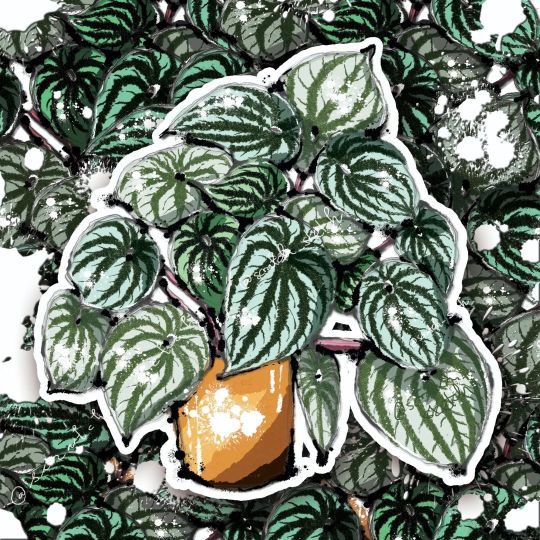
Peperomia "Watermelon" Argyreia _ It has shiny leaves and the texture is exactly the same with watermelon's. Peperomia is a genus with wide range distinctive varieties. Peperomia also has many fanatic who have been working hard on collecting all of them, globally. Peperomia watermelon is beautiful with the silver bluish leaves, and the purplish magenta petioles. I already had many success on propagating them, but making them grow big healthy leaf is quite a challenge. _ #scratch_sketch #wiwied2022 #sketch #sketching #sketchbook #sketchhabit #sketchjournal #drawing #scratch #journal #sketsa #lifeillustrated #illustratedjournal #houseplants #peperomia #peperomiaargyreia #peperomiawatermelon (at Cimahi) https://www.instagram.com/p/CdUfFbCvvOa/?igshid=NGJjMDIxMWI=
#scratch_sketch#wiwied2022#sketch#sketching#sketchbook#sketchhabit#sketchjournal#drawing#scratch#journal#sketsa#lifeillustrated#illustratedjournal#houseplants#peperomia#peperomiaargyreia#peperomiawatermelon
1 note
·
View note
Text
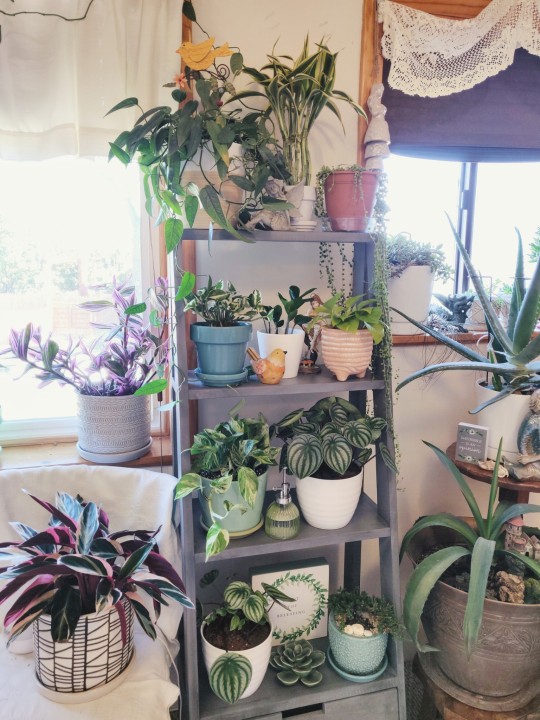
Sooo I found a new plant shelf
#plantblr#houseplants#my plants#plants#houseplant#potted plants#potted plant#plant collection#watermelon peperomia#peperomia argyreia#njoy pothos#manjula pothos#marble queen pothos#neon pothos#cebu blue pothos#zz plant#zamioculcas zamiifolia#tradescantia nanouk#stromanthe sanguinea#stromanthe triostar#string of pearls#senecio rowleyanus#aloe vera#agave americana
114 notes
·
View notes
Text

My little Peperomia argyreia.
2 notes
·
View notes
Text
The Allure of Pink Bubbles Plant: A Quirky Addition to Your Indoor Greenery
In the realm of indoor plants, the Pink Bubbles plant stands out as a charming and distinctive addition, captivating plant enthusiasts with its unique appearance and easy-going nature. Also known as the Peperomia argyreia or Watermelon Peperomia, this delightful plant brings a touch of whimsy and elegance to any indoor space.
Embracing Uniqueness: The Pink Bubbles Plant
The Pink Bubbles plant derives its name from its striking foliage that resembles tiny pink bubbles or watermelon rinds. Its oval-shaped leaves feature silver-green stripes and a delightful pattern that adds a playful and refreshing aesthetic to any room.
Growing and Caring for the Pink Bubbles Plant
Light: Thriving in indirect sunlight or partial shade, this plant enjoys bright, filtered light. Direct sunlight can scorch its delicate leaves.
Watering: The Pink Bubbles plant prefers slightly moist soil. Allow the soil surface to dry out before watering to prevent overwatering, which can lead to root rot.
Temperature and Humidity: Maintaining a moderately warm environment with adequate humidity levels suits this plant. Avoid exposing it to cold drafts.
Soil and Repotting: Well-draining soil mixtures, such as those formulated for succulents, work well. Repotting should be done when the plant outgrows its container.
Versatility and Decorative Appeal
The Pink Bubbles plant's compact size and low-maintenance nature make it a versatile addition to various indoor settings:
Décor Accent: Its unique foliage and compact growth habit make it an excellent choice for tabletops, shelves, or as a decorative accent in living spaces.
Terrariums and Group Plantings: Due to its small size and ornamental appearance, it thrives in terrariums or grouped with other plants to create captivating displays.
Office Greenery: Ideal for office environments, this plant brings a touch of nature and vibrancy to workspaces without demanding excessive care.
Tips for Success and Enjoyment
Pruning: Regularly prune to maintain its compact shape and encourage healthy growth.
Fertilization: Occasional feeding with a balanced fertilizer during the growing season can boost its vitality.
Pest Management: Keep an eye out for pests like spider mites or mealybugs and address any issues promptly with natural remedies or insecticidal soap.
Conclusion: Adding Charm to Indoor Greenery
The Pink Bubbles plant, with its captivating appearance and undemanding care requirements, embodies the perfect combination of charm and ease for indoor plant enthusiasts. Its whimsical foliage and adaptability make it an ideal choice for anyone seeking a delightful addition to their indoor greenery collection
0 notes
Text

These weren't for sale yet but they're so beautiful, and flowering!
52 notes
·
View notes
